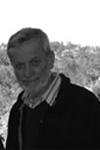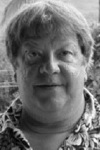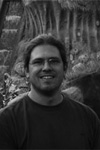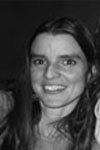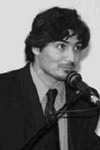new trends in advanced fluorescence techniques
january 25-29, 2016 | concepción, chile
Dr. Susana Sánchez Donoso | Facultad de Ciencias Químicas | Departmento de Polimeros | Universidad de Concepción | Concepción, Chile
Susana Sánchez was born in Chile and received her doctorate degree in Chemistry from the Catholic University of Valparaiso. In 1997, she joined the Laboratory for Fluorescence Dynamics (LFD) at the University of Illinois at Urbana-Champaign as a post doctoral fellow and become the User Coordinator in 2001. In 2006 she moved with the LFD to the University of California at Irvine as an Independent Researcher and the User Coordinator of the LFD. Since 2013 she has been an Assistant Professor at the University of Concepción in Chile at the Polymers Department. She teaches Basic Chemistry, Biopolymers and Biological Chemstry. Dr. Sánchez's research interests are in the area of protein-protein and protein-lipid interactions. Her current projects involve the study of the role of membrane fluidity on the cholesterol removal by HDL particles from artificial systems and cells.
Prof. Andre M.O. Gomes | Cidade Universitária | Laboratório de Termodinâmica de Proteínas e Estruturas Virais Gregorio Weber Instituto de Bioquímica Médica | Universidade Federal do Rio de Janeiro, Brasil
Andre M.O. Gomes was born in Rio de Janeiro, Brazil. He received his doctorate degree in Biological Chemistry from the Federal University of Rio de Janeiro (UFRJ) in 2002. He works at the Gregorio Weber Laboratory of Thermodynamics of Proteins and Viruses at the UFRJ. In 2002 he got a position as Associate Professor at the Medical Biochemistry Institute at the same university and from 2004 to 2006 he joined the Laboratory for Fluorescence Dynamics (LFD) at the University of Illinois at Urbana-Champaign as a post-doctoral fellow.
Dr. Gomes's research interests are in the area of the structural biology of viruses, virus-cell interaction and protein-protein, protein-lipid and protein-nucleic acid interactions. His current projects involve the use of fluorescence spectroscopy, hydrostatic pressure and two-photon microscopy, including single particle tracking and fluorescence correlation spectroscopy (FCS) for the study of viral particles inactivation, assembly and infection of cells.
Prof. Enrico Gratton | University of California, Irvine | Department of Biomedical Engineering | Irvine, CA 92697-2715 | USA | Tel: 949-824-2674
Enrico Gratton was born in Merate (Como) Italy. He received his doctorate degree in physics from the University of Rome in 1969. From 1969 to 1971 he was a post-doctoral fellow at the Istituto Superiore di Sanità in Italy. He went to the University of Illinois at Urbana-Champaign (UIUC) in 1976 and began his work as a research associate in the Department of Biochemistry. In 1978 he was appointed assistant professor in the Department of Physics at UIUC. In 1989 he was promoted to professor. Dr. Gratton's laboratory has reached international recognition for the development of instrumentation for time-resolved fluorescence spectroscopy using frequency domain methods.
In 1986 Dr. Gratton was awarded a grant from the National Institutes of Health, National Center for Research Resources, to establish the first national facility dedicated to fluorescence spectroscopy: the Laboratory for Fluorescence Dynamics (LFD). In 2006 the entire LFD laboratory moved to its current location at the new Natural Sciences II building at the University of California, Irvine. Dr. Gratton remains Principal Investigator of the LFD and holds joint appointments as Professor in the UCI departments of Biomedical Engineering and Physics and in the College of Medicine. The facility is a state-of-the-art fluorescence laboratory for use by local, national, and international scientists. It has a dual and equal commitment to research and development of fluorescence instrumentation and theory and to service in a user-oriented facility. Dr. Gratton's research interests are varied and many; they include design of new fluorescence instruments, protein dynamics, hydration of proteins, and I.R. spectroscopy of biological substances. Dr. Gratton has authored or co-authored over 400 publications in refereed scientific journals.
Prof. David M. Jameson | University of Hawaii at Manoa | Department of Cell and Molecular Biology | John A. Burns School of Medicine | Honolulu, HI 96822 | USA | Tel: 808-956-5034 | Website
A student of the late Prof. Gregorio Weber, David Jameson is Full Professor in the Department of Cell and Molecular Biology at the University of Hawaii. Prof. Jameson's research interests are focused on the development and application of time-resolved and steady-state fluorescence methodologies to elucidate dynamic aspects of biomolecules, including proteins, nucleic acids and membrane systems.
Currently, his laboratory is investigating several protein systems, including dynamin, a large (98kDa) GTPase which functions to "pinch-off" membrane vesicles in pathways such as receptor mediated endocytosis and synaptic vesicle recycling. This research involves both in vitro and in vivo studies on the self-association modes of dynamin as well as its interaction with membranes and other proteins such as endophilin and Arc. His lab also has a project on Botulinum Neurotoxin funded by Allergan, Inc. This project involves biophysical studies on proteins forming the neurotoxin complex as well as development of in vitro and in vivo toxin assays based on fluorescence fluctuation spectroscopy.
Author of more than 130 peer-reviewed articles, Prof. Jameson regularly reviews grants for the American Heart Association, the National Institutes of Health and the National Science Foundation. His research has been supported by grants from the National Institutes of Health, the National Science Foundation and the American Heart Association.
Prof. Valeria Levi | Laboratorio de Dinámica intracelular Facultad de Ciencias Exactas y Naturales | Universidad de Buenos Aires | Argentina
Valeria Levi was born in Argentina and received her doctorate degree in Chemistry at the University of Buenos Aires. In 2002, she joined the Laboratory for Fluorescence Dynamics (LFD) at the University of Illinois at Urbana-Champaign as a postdoctoral fellow.
Dr. Levi's research is focused on single particle tracking and fluorescence correlation spectroscopy techniques and their applications to studies of dynamics in living cells. Her current projects involve the use of these techniques for the study of molecular motors and involved in intracellular transport.
She is a professor at the Department of Biological Chemistry of the University of Buenos Aires, Argentina.
Prof. Andrea C. Oliveira | Laboratório de Termodinâmica de Proteínas e Estruturas Virais Gregorio Weber | Instituto de Bioquímica Médica | Universidade Federal do Rio de Janeiro | Brazil
Andrea Cheble de Oliveira was born in Rio de Janeiro, Brazil. She received her doctorate degree in Biological Chemistry from the Federal University of Rio de Janeiro (UFRJ) in 1998. She works at the Gregorio Weber Laboratory of Thermodynamics of Proteins and Viruses at the UFRJ. In 2001, she got a position as Associate Professor at the Medical Biochemistry Institute at the same university, and from 2004 to 2006 she joined the Laboratory for Fluorescence Dynamics (LFD) at the University of Illinois at Urbana-Champaign as a postdoctoral fellow.
Dr. Oliveira's research interests are in the area of the structural biology of viruses, virus-cell interaction and protein-protein, protein-lipid and protein-nucleic acid interactions. Her current projects involve the use of fluorescence spectroscopy, hydrostatic pressure and two-photon microscopy, including single particle tracking and fluorescence correlation spectroscopy (FCS), for the study of viral particle inactivation, assembly and infection of cells.
Prof. Luis Aguilar Cavallo | Laboratorio de Fotofísica y Espectroscopía Molecular | Instituto de Química, Facultad de Ciencias | Pontificia Universidad Católica de Valparaíso, Chile
Luis Aguilar was born in Chile and received his PhD in Chemistry from the Catholic University of Valparaiso. In 1999, he was awarded a postdoctoral grant from CONICYT (The National Committee of Sciences and Technology), Chile. In 2000 he was a post-doctoral fellow at the Crocker Nuclear Laboratory, University of California, Davis in USA. Since 2001 he has been the Director and principal Investigator of the Laser Laboratory at the Catholic University of Valparaiso. From 2003 to 2008, he was appointed full professor in the School of Agriculture Sciences at the University of Viña del Mar, Chile, where he was the Director of the biotechnology program. In 2008, he got a position as Assistant Professor at the Chemistry Institute at the Catholic University of Valparaiso. Since the beginning of 2012 Dr. Aguilar has been the Associate Professor at the same Institute.
Dr. Aguilar’s research interests are protein-lipid interactions and enzymatic kinetics and biotechnological applications. His current projects involve the use of fluorescence spectroscopy to study the influence of lipid phase organization on the translocation of cell-penetrating peptides, the development of inactivated vaccines with pulsed technology and the isolation and characterization of Cryophilic Protein for Food Biotechnology applications.
Dr. Germán Günther S. | Laboratorio de Cinética y Fotoquímica | Facultad de Ciencias Químicas y Farmacéuticas | Universidad de Chile, Santiago de Chile, Chile
German Günther was born Santiago, Chile. He received his doctorate degree in Chemistry from the Universidad de Chile in 2000. He works at the Laboratorio de Cinética y Fotoquímica at the Universidad de Chile. In 1995, he got a position as Assistant Professor at the Departmento de Química Orgánica y Físico Química of the same university.
Dr. Günther`s research interests are in the area of Photochemistry, Chemistry of microheterogeneous sytems and Glycochemistry. His current project involves the use of fluorescence spectroscopy, lifetime measurements and fluorescence correlation spectroscopy (FCS) for the study microheterogeneous systems constituted by sugar nonionic surfactants.

